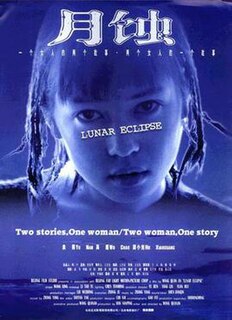
An eclipse is an astronomical event that occurs when an astronomical object is temporarily obscured, either by passing into the shadow of another body or by having another body pass between it and the viewer. This alignment of three celestial objects is known as a syzygy. Apart from syzygy, the term eclipse is also used when a spacecraft reaches a position where it can observe two celestial bodies so aligned. An eclipse is the result of either an occultation or a transit.
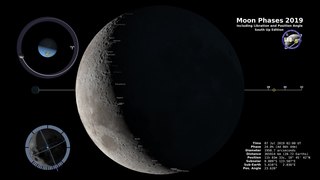
The lunar phase or phase of the Moon is the shape of the directly sunlit portion of the Moon as viewed from Earth. The lunar phases gradually and cyclically change over the period of a synodic month, as the orbital positions of the Moon around Earth and of Earth around the Sun shift.

Eclipses may occur repeatedly, separated by certain intervals of time: these intervals are called eclipse cycles. The series of eclipses separated by a repeat of one of these intervals is called an eclipse series.
The saros is a period of exactly 223 synodic months, that can be used to predict eclipses of the Sun and Moon. One saros period after an eclipse, the Sun, Earth, and Moon return to approximately the same relative geometry, a near straight line, and a nearly identical eclipse will occur, in what is referred to as an eclipse cycle. A sar is one half of a saros.

Moonlight consists of mostly sunlight reflected from the parts of the Moon's surface where the Sun's light strikes.
Moonlight is the reflected light that comes to Earth from the Moon.
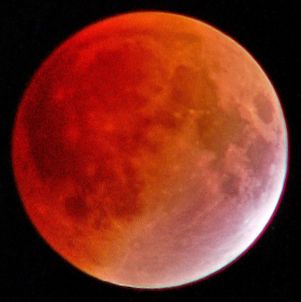
A total lunar eclipse occurred on August 28, 2007, lasting just over 90 minutes. The Moon entered the Earth's penumbra at 7:53:40 UTC. The first partial phase began in earnest at 8:51:16 UTC when the Moon entered the Earth's umbra. It exited the penumbra at 13:20:57 UTC.

A partial lunar eclipse took place on October 17, 2005, the second of two lunar eclipses in 2005. A tiny bite out of the Moon may have been visible at maximum, though just 6% of the Moon was shadowed in a partial eclipse which lasted for 56 minutes exactly and was visible over east Asia, Australasia, and most of North America. A shading across the moon from the Earth's penumbral shadow should have been visible at maximum eclipse.

A partial lunar eclipse was visible on New Year's Eve, Thursday, December 31, 2009. It was the last and largest of four minor lunar eclipses in 2009. This lunar eclipse is also notable, because it occurred during a blue moon. The next eclipse on New Year's Eve and blue moon will occur on December 31, 2028.

A total lunar eclipse took place on April 15, 2014. It was the first of two total lunar eclipses in 2014, and the first in a tetrad. Subsequent eclipses in the tetrad are those of October 8, 2014, April 4, 2015, and September 28, 2015.

A total lunar eclipse took place on October 8, 2014. It is the second of two total lunar eclipses in 2014, and the second in a tetrad. Other eclipses in the tetrad are those of April 15, 2014, April 4, 2015, and September 28, 2015.

A total lunar eclipse took place on 4 April 2015. It is the former of two total lunar eclipses in 2015, and the third in a tetrad. Other eclipses in the tetrad are those of 15 April 2014, 8 October 2014, and 28 September 2015.

A total lunar eclipse took place between September 27 and 28, 2015. It was seen on Sunday evening, September 27, in the Americas; while in Europe, Africa, and the Middle East, it was seen in the early hours of Monday morning, September 28. It was the latter of two total lunar eclipses in 2015, and the final in a tetrad. Other eclipses in the tetrad are those of April 15, 2014, October 8, 2014, and April 4, 2015.

A total lunar eclipse occurred at the Moon’s descending node on Friday, 27 July 2018. The Moon passed through the center of Earth's shadow in what was the first central lunar eclipse since 15 June 2011. It was also the second total lunar eclipse in 2018, after the one on 31 January. It was the longest total lunar eclipse of the 21st century, but not the longest in the 3rd millennium.

A total lunar eclipse occurred on January 31, 2018. The Moon was near its perigee on January 30 and as such may be described as a "supermoon". The previous supermoon lunar eclipse was in September 2015.
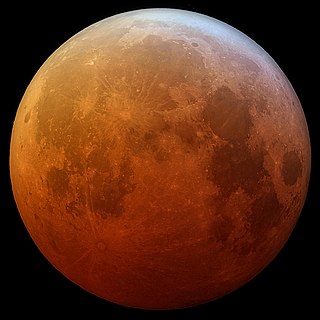
A total lunar eclipse occurred on January 21, 2019 UTC. For observers in the Americas, the eclipse took place between the evening of Sunday, January 20 and the early morning hours of Monday, January 21. For observers in Europe and Africa, the eclipse occurred during the morning of January 21. The Moon was near its perigee on January 21 and as such can be described as a "supermoon".

A total penumbral lunar eclipse is a lunar eclipse that occurs when the Moon becomes completely immersed in the penumbral cone of the Earth without touching the umbra.
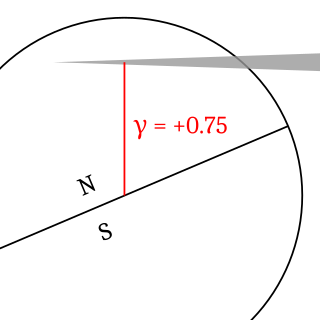
Gamma of an eclipse describes how centrally the shadow of the Moon or Earth strikes the other body. This distance, measured at the moment when the axis of the shadow cone passes closest to the center of the Earth or Moon, is stated as a fraction of the equatorial radius of the Earth or Moon.
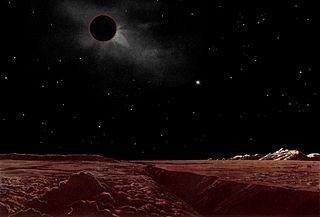
Solar eclipses on the Moon are caused when the planet Earth passes in front of the Sun and blocks its light. Viewers on Earth experience a lunar eclipse during a solar eclipse on the moon.

